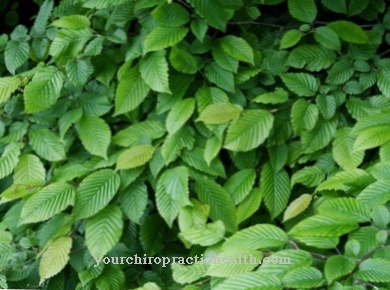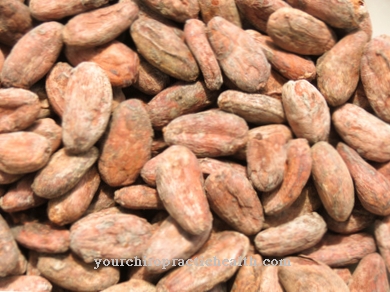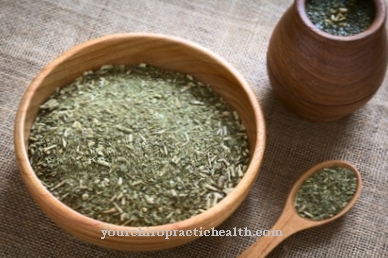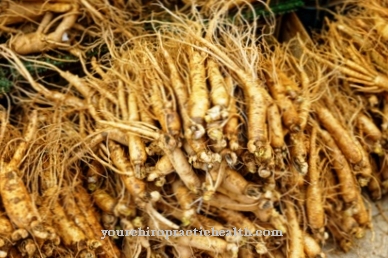Of the real speedwell could at first glance be mistaken for a weed by the wayside. Only at second glance does it show that it is a very versatile medicinal plant with a long history.
Occurrence & cultivation of the real speedwell

The Wald-Ehrenpreis shows, preferably after its name, forests, where it grows in small carpets, but it can also be found in meadows, along roadsides and in the heather. It is a perennial plant and every spring it sprouts hairy stems up to 30 cm high, with oval leaves that have fine hairs and jagged leaf edges.
In the flowering period from July to September, small, bright blue, lanceolate flowers with a white spot in the middle grow in a cluster. Because of its appearance, the true speedwell can easily be confused with the forget-me-not, but the speedwell has four petals and the forget-me-not has five.
Effect & application
The name Ehrenpreis and the other names already show the great importance attached to the plant in earlier times. In the Middle Ages it was considered the miracle cure and, in addition to its expectorant, diuretic and blood-purifying effect, it was also said to have great healing properties for plague and leprosy. Areas of application were diseases of the respiratory tract, skin, problems with the stomach and metabolic diseases. The herb was dried and mostly made as a tea.
Above-ground parts are used for use as a medicinal herb. They are collected during the flowering period in May / June, then dried and processed into different products in various ways:
As a rule, speedwell is not used alone for a tea, but is made into a tea mixture together with other medicinal herbs, because tea only tastes too bitter from speedwell. For an expectorant tea for respiratory diseases, honor price is mixed with coltsfoot, ribwort and lungwort according to the old tradition.
For urinary tract infections, rheumatism and gout, a mixture of speedwell and oak bark is made into a tea. Kneipp suggested a mixture of speedwell, field horsetail, stepping away or centaury. A tea mixture made from strawberry leaves, field horsetail and wormwood or from speedwell, mint, centaury and juniper can be used for stomach / intestinal or digestive problems.
Instead of making tea, it can also be made into fresh juice. For this, the fresh speedwell herb is pressed and drunk. A gargle made of speedwell and alum is used for inflammation and ulceration in the mouth and throat.
To make a wound balm, 250 ml of Ehrenpreis juice and 250 ml of grain brandy are mixed together. The mixture must then be steeped for a few days and then Venetian soap, 250 ml alcohol and 100 ml rose water are added, heated and mixed well to distribute all ingredients evenly. This balm is an effective remedy for skin diseases and light burns.
Ehrenpreis can be bought in pharmacies and herbalists, but it can also be collected in dry forests, on meadows and along roadsides.
Importance for health, treatment & prevention
The real honorary price was first mentioned as a medicinal plant in the 16th century and was used internally for plague fever, complaints of the lungs, stomach, intestines, kidneys, bladder, liver, spleen, uterus and consumption and externally for inflamed wounds and skin problems.
The botanist Johannes Francus even gave him 300 pages in a treatise at the end of the 17th century and really raved about the diverse effects. Designations such as “Allerweltsheil” reflect the comprehensive meaning that the honorary award had at that time.
In the course of time, meaning became more and more relative and today it only plays a much smaller role than in earlier times. Many of the effects that it was said to have could not be proven, so it is not recommended to use it. But in folk medicine and homeopathy, the honorary award was able to maintain its place.
The speedwell has a wide range of effects on the body: Thanks to its blood-purifying effect, it helps with chronic skin diseases, especially if they are also associated with itching, such as neurodermatitis and psoriasis. Ehrenpreis also helps against the unpleasant itching of old age.
It stimulates the metabolism and has a beneficial effect in reducing excess weight. Liver and gallbladder problems are also positively influenced by the use of Ehrenpreis.
In general, speedwell harmonizes the body and can regulate a sensitive stomach and intestine, and also compensate for symptoms of exhaustion and stress, especially in combination with mental overexertion. It has an antispasmodic and relaxing effect, among other things for headaches, migraines and rush of blood in the head.In the case of colds, speedwell promotes expectoration and heals cystitis. Pastor Kneipp also endorsed it as an expectorant for gout and consumption.
In homeopathy, Ehrenpreis is mainly used for chronic bronchitis, bronchial asthma, tuberculosis and swelling of the lymph glands. It is used to strengthen kidney diseases and kidney grits. Tea blends with speedwell can be used for healing, but also as a cure for prevention.























.jpg)




